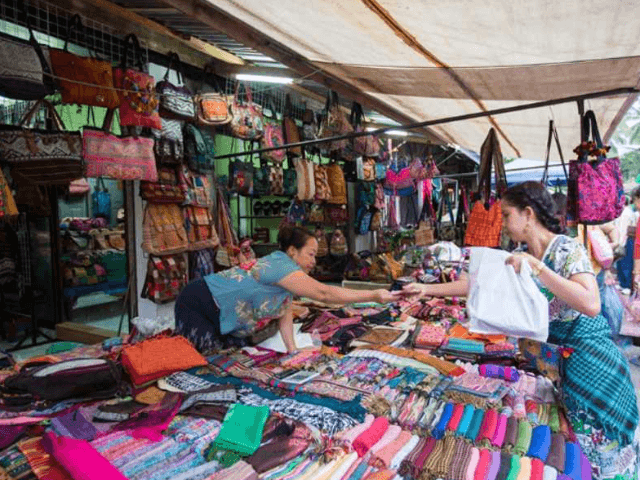As the place where unprecedented battles between tigers and elephants took place, the Ho Quyen Hue is considered the only "Roman arena" in Vietnam in the past and is currently also an attractive destination in the past. The journey to explore Hue sho
TABLE OF CONTENTS
1
Where is Ho Quyen?
2
Ho Quyen relic is located 4km west of the city center. This unique project is located in Group 1 Truong Da of Thuy Bieu ward. It is a unique project in the complex of 16 architectural works of Nguyen Dynasty in Hue.
3
History of Ho Quyen relic
4
Explore the architecture of Ho Quyen relics
5
Ho Quyen relics and unequal battles
As the place where unprecedented battles between tigers and elephants took place, the Ho Quyen is considered the only "Roman arena" in Vietnam in the past and is currently also an attractive destination in the past. The journey to explore Hue should not be missed.
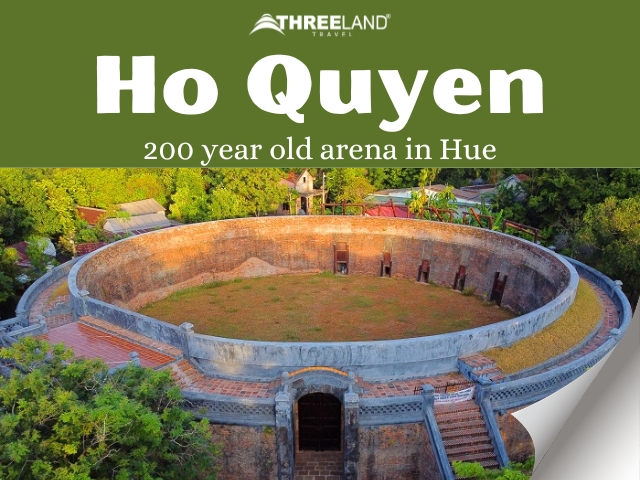
Hue is not only a destination of majestic architectural works and lyrical nature, but also a place that marks the golden mark of a historical period of the nation and the Ho Quyen relic is certainly one of the places to visit. left a special impression on many tourists. Not a temple, palace or mausoleum, the Ho Quyen relic is a true arena, where life-and-death battles between elephants and tigers took place, unique for more than 200 years. Visiting the Ho Quyen relic, visitors will have new and interesting perspectives on the spiritual life of the ancient capital of Hue.
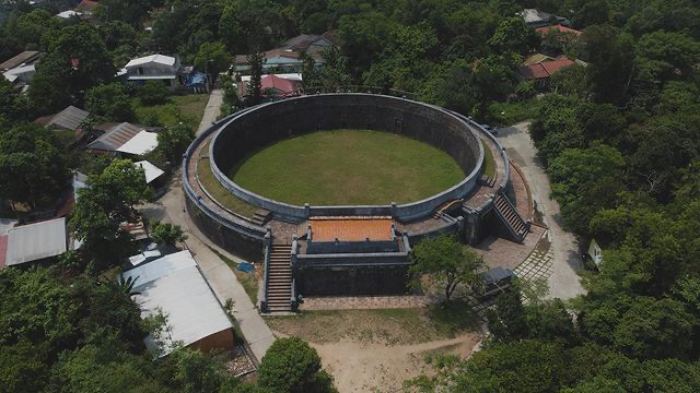
Where is Ho Quyen?
Ho Quyen relic is located 4km west of the city center. This unique project is located in Group 1 Truong Da of Thuy Bieu ward. It is a unique project in the complex of 16 architectural works of Nguyen Dynasty in Hue.
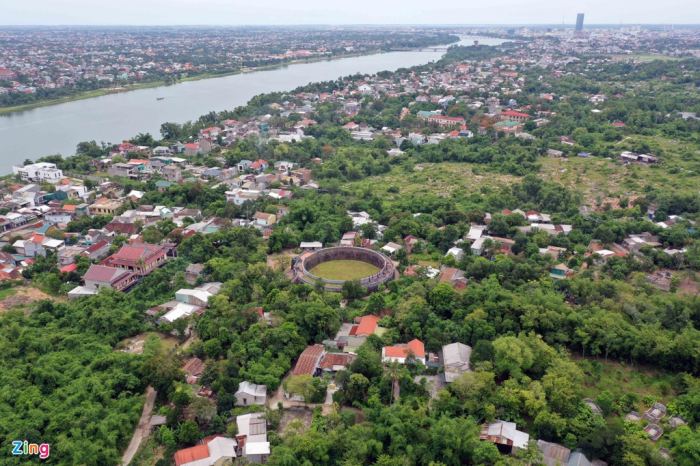
To get to Ho Quyen, visitors can travel by motorbike, car, taxi, Grap with different routes. If traveling from the central area, Truong Tien bridge, you follow the route to Aunt Loan grocery. Then turn left then go straight to reach the Ho Quyen relic area. Our experience is that you should come to this monument in the morning because the scenery here will be more beautiful and it will also be easier for visitors to combine visits to other locations.
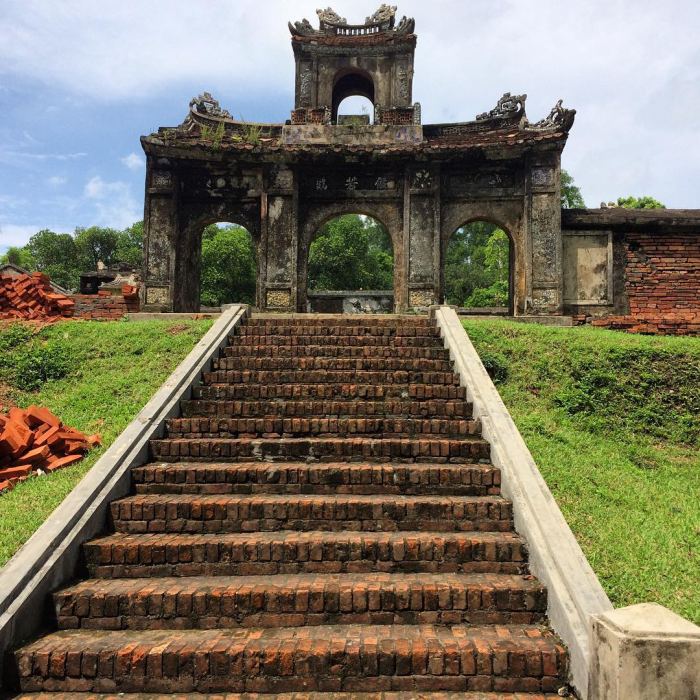
Read more: Discover Hue in 2023: How Much to Pay for Popular Sights
History of Ho Quyen relic
The idea of the Ho Quyen relic is the consequence of a long historical process. During the Nguyen Dynasty, matches between tigers and elephants were held early, but the first location was not today's Ho Quyen area but at Da Vien Islet on the Perfume River. The elephant and tiger fights during the Nguyen kings were like a big festival for the court and people to enjoy. In the early days, because there was no arena, incidents often occurred, typically during the reign of King Gia Long when the match was held in an open field in front of the capital, under a fence of soldiers with protective weapons. Around there, a tiger broke the rope and slapped the mahout, causing him to be trampled to death by an elephant. The animal's chaos also injured many people and became a terrifying obsession for witnesses.
In 1829, when King Minh Mang and his officials were watching a death battle between elephants and tigers held here, the tiger suddenly swam towards the dragon boat. The king had to use a pole to push the tiger away. The army promptly killed the tiger right on the river so the king escaped.
In 1829, when King Minh Mang was watching a fight between an elephant and a tiger, there was an incident where the tiger suddenly swam towards the dragon boat. The king had to use a stir fry to push the tiger away and the army promptly killed the tiger on the river then will the king escape. Realizing that organizing fights between elephants and tigers at Da Vien dunes was not safe, in 1830 King Minh Mang built a solid arena at Long Tho mound, Nguyet Bieu village, Truong Da village of Thuy Bieu commune. Currently, that is also the current Ho Quyen relic.
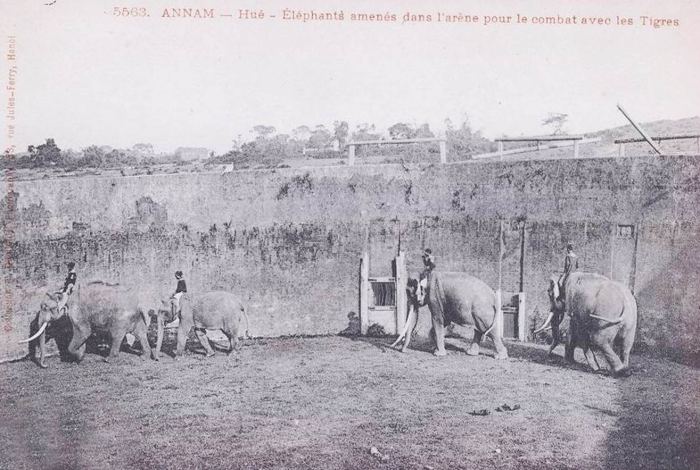
The last match at Ho Quyen took place in 1904 during the reign of King Thanh Thai. After that, the Ho Quyen relic was abandoned and somewhat degraded. Currently, the Hue Monuments Conservation Center has been restoring, preserving and is ready to open to welcome tourists from near and far to visit.
Explore the architecture of Ho Quyen relics
The structure of the Ho Quyen relic is simple but very sturdy. The arena was built with the main materials of brick, stone, lime mixed with honey, and compressed earth with a scarf-shaped structure. The structure of the building is two concentric circular walls. The inner ring is 5.90m high and the outer ring is 4.75m high.
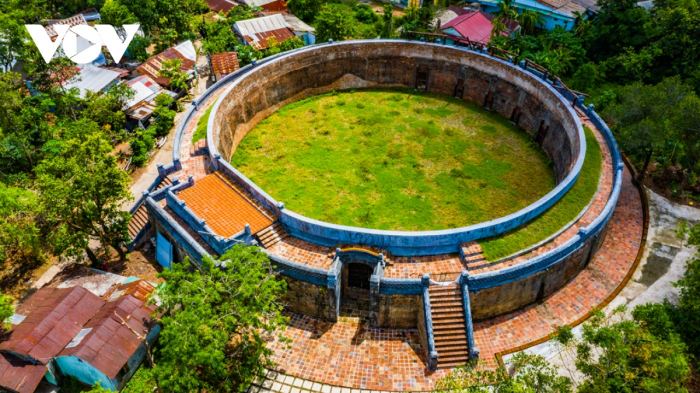
The arena has a grandstand for the king to sit on, built higher than the surrounding areas in the North with spacious space. On the left side of the grandstand are 24 steps for mandarins and ministers, on the right side are steps for qian and soldiers. Looking towards the opposite direction from the stands area, there are 5 tiger cages built right in the heart of the arena with wooden doors that open and close by pulling down the rope above. The arena is a circular grass carpet.
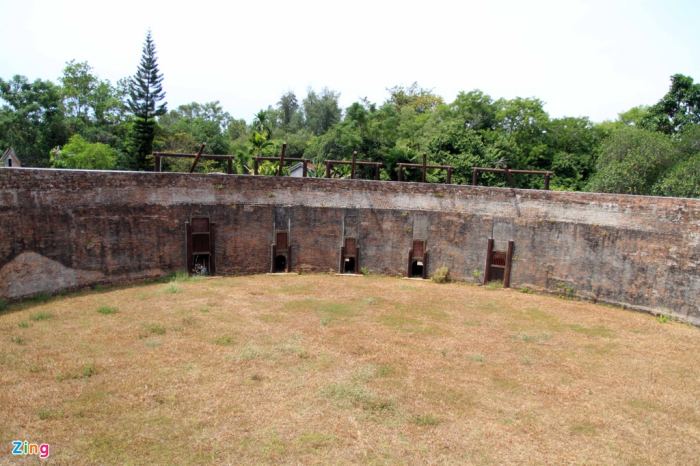
The area outside the city wall system is also designed with a door 7 inches wide and 8 meters high made of coal stone with the inscription "Ho Quyen" written on it, which is the place where people bring elephants into the competitions.
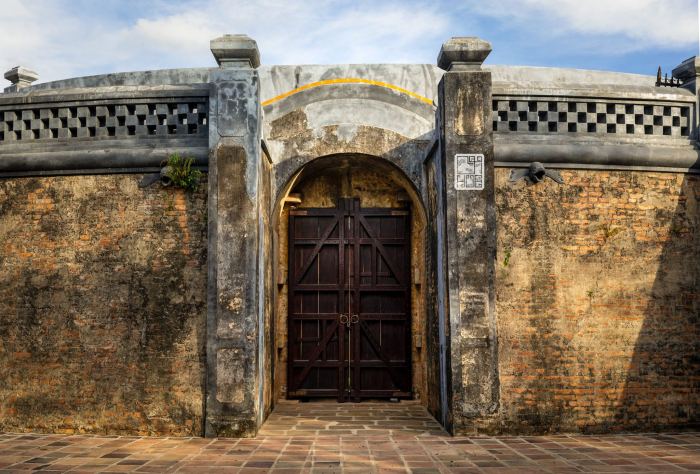
Ho Quyen relics and unequal battles
During the reign of the Nguyen kings, the elephant and tiger matches at the Ho Quyen relic were truly a big festival. From early in the morning, people eagerly flocked around the arena, where incense burners were set up with festive decorations, flags and flowers. At noon, the king will ride a dragon boat close to the riverbank, then mount a canopy covering four golden parasols to follow the main gate to the grandstand. When the king and mandarins are seated, the gate closes and the martial arts mandarin beats the drum to open the match. The door in the tiger cage will open first to let the tiger jump out, the elephant will also enter from the other side to start a fierce and fierce battle with the sound of drums, cheers, firecrackers and even the roar of the tiger, the fight can last for a long time.
However, in reality, the fights between elephants and tigers in the Ho Quyen are never evenly matched, the elephants always win. According to the concept of ancient kings, tigers represent evil and elephants represent good. Evil cannot defeat good, so elephants must defeat tigers. To ensure this, before the fight, the elephant will be carefully cared for while the tiger will be starved for a few days. The tiger will even have its fangs broken and its claws stripped, so its fighting ability will definitely not be equal to the elephant's. and the tiger's defeat is inevitable.
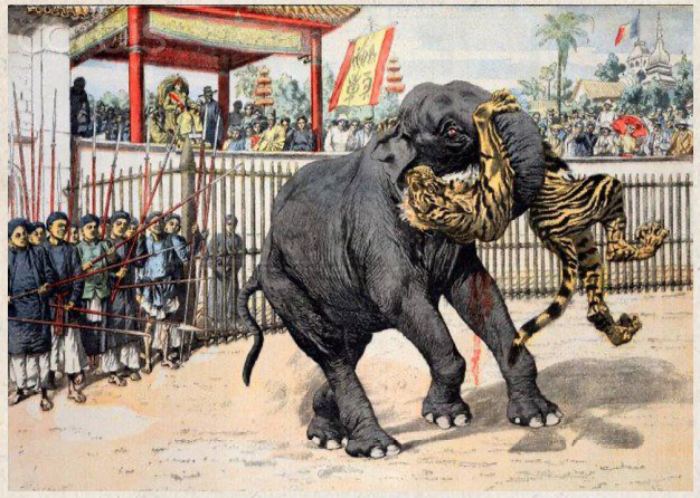
Possessing historical, architectural and cultural values, the Ho Quyen relic has been recognized as a national relic and has become an attractive destination for tourists to visit and learn about the arena that the famous elephant and tiger fights of the past.
For your 2023 vacation planning, we hope you found this information about Hue tourism to be educational and helpful. Hue is an excellent place to learn about Vietnamese culture and history, and it will certainly present you with an unforgettable experience. If you are looking for a dependable and knowledgeable travel provider, choose Threeland Travel to assist you in preparing your trip to Hue. We can customize your itinerary based on your tastes and budget, and we can manage everything from ticket bookings to lodging and transportation. To learn more about our unique specials and packages, please visit our website or call us right now. Don't miss out on seeing Hue with Threeland Travel!










